Photos by Kevin Wing
American V-Twins. We can’t get enough of them, especially the ones that have been an integral part of the motorcycles we’ve grown to love over the years. There is an innate authenticity to an air-cooled V-Twin – each part is apparent to a viewer, unencumbered by radiators, hoses, and water pumps.
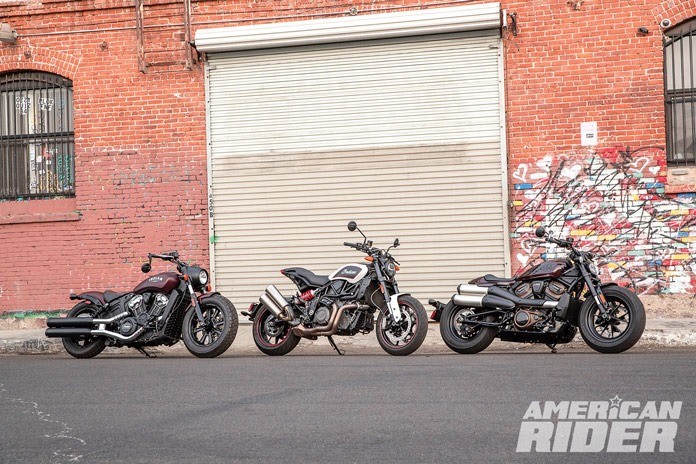
But in this third decade of the 2000s, contemporary air-cooled engines are becoming as rare as non-inked skin at a biker rally. Emissions regulations and the never-ending quest for more power have left Indian and Harley-Davidson as a couple of the few purveyors of big motorcycles without radiators.
But even these legacy brands understand the inevitability toward liquid-cooled engines. Harley was the first to bring a radiator with the VRSC V-Rod in 2002, a platform roundly ignored by Bar-and-Shield traditionalists.
Indian’s first water-cooled bike was 2015’s Scout, which also had a 69ci V-Twin with double overhead cams and four valves per cylinder. A hot-rodded version of that motor resides in Indian’s FTR that debuted in 2019.
And now Harley brings its all-new Revolution Max engine to the party. First seen in the game-changing Pan America adventure bike, it’s now jammed into the new Harley-Davidson Sportster S. Like Indian’s V-Twins, the S uses a 60-degree vee angle and double overhead cams, but it also adds variable valve timing to the equation. This innovation theoretically boosts both horsepower and torque for optimum performance at all revs.
Related: End of the Line for the Evo-powered Sportster
The MoCo has invested untold time and money developing the Rev Max, as this motor will underpin a range of new motorcycles. Its modular design, using the engine as a stressed member of the chassis, allows different frame elements to be substituted, simplifying the creation of new models around the engine. Witness how radically different the Pan America is from the Sportster S.
The Setup
The significance of the Rev Max necessitated this test. We needed to find out how it compares to its Indian engine analogs. Except neither the Scout nor the FTR directly correspond with the new Sportster.

The Bobber tested here is the best match in terms of its cruiser layout, but it’s not nearly as powerful and is $4,000 cheaper. The Indian FTR S matches the Harley-Davidson Sportster S in price, power, and technology, but it’s not any sort of a cruiser. The perfect Harley-Davidson Sportster S competitor would be a Scout Bobber stuffed with the FTR’s motor and electronics.
Related: 2023 Indian Motorcycle Lineup | First Look Review
Still, this comparo proved to be illuminating and entertaining as we sorted the best of American V-Twin offerings with less than 1,300cc. The old Sportster platform, as endearing as it is, can’t compete at this level, down more than 50 horsepower from the new Sporty while weighing nearly 60 additional pounds.
Here’s Looking At You
The Harley-Davidson Sportster S looks imposing with its crouched, fat-tired stance and bazooka-sized exhaust that edges toward caricaturish proportions. Its right-side profile is easily its best side, with nice finish detailing on its engine. The left side looks relatively unfinished and plain.
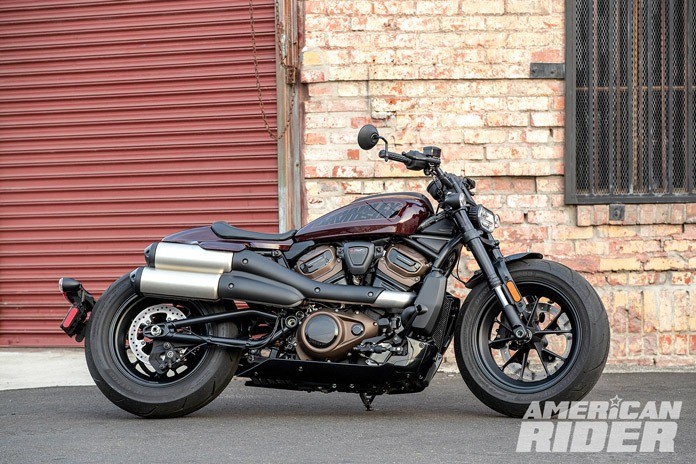
Its ovoid LED headlight adds a futuristic touch, and the diminutive tailsection is inspired by the legendary XR750. A satellite-style taillight and license-plate holder (like the FTR’s) is used to tidy up the rear view, but it adds its own bulk hanging off the rear – design is always a compromise, especially when meeting D.O.T. requirements.

The Indian Scout Bobber has similar proportions with styling that is more elemental, especially in the engine room. It’s a nicely proportioned machine with attractive bobber aesthetics. A two-tone seat beautifully matches the paint scheme. Its aesthetic downside is a radiator shroud stretching all the way from the cleanly styled fuel tank to below the engine, a more obtrusive arrangement than the shorter and wider rads on the others.

The Indian FTR brings its own style to the party, inspired by Indian’s championship-winning FTR750 flat-tracker. As such, its riding position is dramatically distinct from the feet-forward ergonomics of the other two bikes. Red pinstriping on the tank is echoed on the wheels and the shock spring to good effect. Brushed-aluminum shotgun-style Akrapovič mufflers on this S model ups the cool factor over the base FTR’s duller setup. A tubular trellis frame wraps around its motor, creating a wheelbase shorter than the Scout’s and about equal to the Sportster’s.
Cockpit Cockfight
A riding experience is largely dictated by the interface with the machine. Each bike in this trio offers pros and cons that are dependent on a rider’s preferences.
The Harley-Davidson Sportster’s ergonomic triangle is nearly identical to the Sportster Forty-Eight’s, but its seat is placed higher at 29.6 inches. The footrests are positioned forward of the seat and are up high to provide decent cornering clearance, up significantly from the Sportster Forty-Eight’s scant 27 degrees. Mid-mount footpegs are a $660 option, a worthy alternative for riders with shorter legs but cramped for tall pilots.
A wide handlebar provides good leverage for bending the Harley-Davidson Sportster S into corners, and it places the rider in a forward-set stance. Mirrors on the bar ends provide a clear view rearward, even if they marginally limit lane-splitting opportunities. Atypical for Harley are smaller-diameter hand grips, a single-button turnsignal switch, and hand levers that are adjustable for reach.
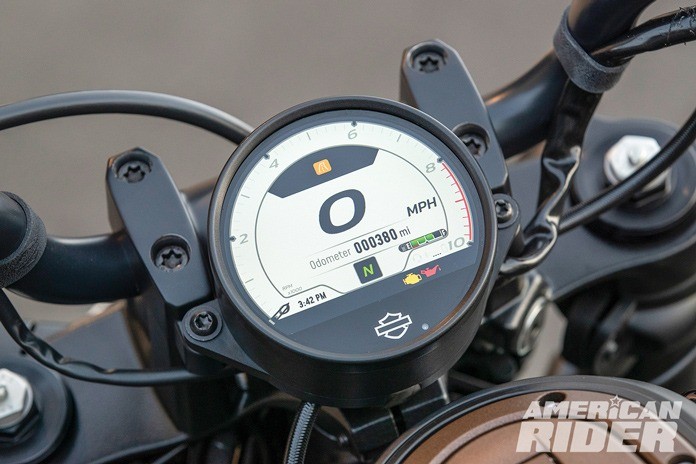
Instrumentation comes via a newfangled color TFT screen in an old-school round housing, with an analog tachometer wrapping over a digital speedometer. In addition to the usual info on display, the Sportster adds a tire-pressure monitor and ambient temperature. Cruise control is another welcome standard feature, and keyless ignition eliminates digging into pockets.
The Indian Scout Bobber loosely mimics the Sportster’s ergos but places a rider lower to the ground. Its relatively plush seat sits at just 25.6 inches, making small riders happy at the expense of Big & Tall shoppers.

The Bobber’s instrumentation is basic, with an analog speedo and a small LCD info panel that displays a clock, gear position, dual tripmeters, and the option to display a numeric tach. Antilock brakes are as high-tech as the Scout gets. Dropped bar-end mirrors look cool but aren’t as easily visible.

The base Indian FTR ($12,999) has instrumentation similar to the Scout’s, but the FTR S ($14,999) tested here gets a color TFT screen to go along with ride-mode selections, traction control, and cornering ABS that the base model lacks. It one-ups the Sportster with touchscreen capability. Cruise control is also standard here. Both the FTR and the Sportster S include a USB charging port and Bluetooth connectivity.
The FTR stands out for its different ergonomic triangle, with a taller seat (32.2 inches) and rear-set footpegs. The riding position is more a sporty standard than a raked-out cruiser. This makes it the first choice for traveling longer distances, and the only choice for bringing along a passenger (without an accessory kit).
Light ‘Em Up!
The Harley-Davidson Sportster S fires up with a rat-a-tat-a-tat distinct from its 45-degree vee brethren. To some, that automatically means they won’t like it. Get over it. It sounds different, not bad. And it’ll tear apart any stock air-cooled Harley. Clutch pull is light and easiest to modulate, and the transmission swaps cogs far more smoothly than the Indians. Throttle reapplication is a mite abrupt, especially in Sport mode.
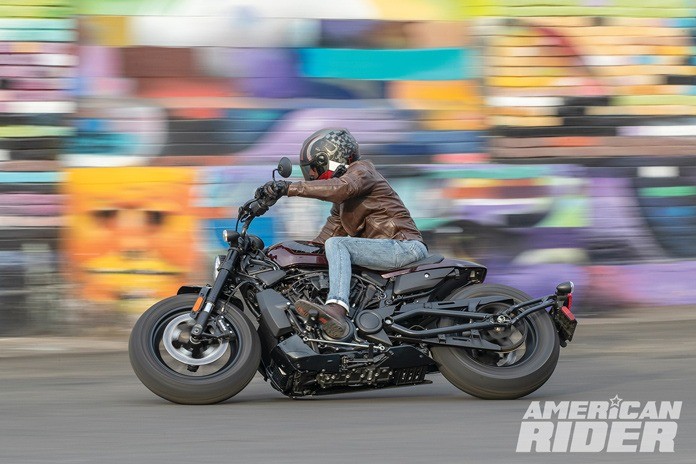
That gargantuan 160/70-17 front tire hinders the Sportster’s steering far less than you might guess, responding mostly normally to steering inputs thanks to its pointy profile. The new Sporty is the first bike across the intersection during a stoplight grand prix, and it’ll wheelie through it if you switch off the traction control. Heat from the catalytic converters ahead of the mufflers is felt, but it stops short of being painful – unless you’re wearing shorts.
The Indian Scout takes the Harley-Davidson Sportster S formula and dials it down a notch. It emits an exhaust note deeper than the others and was our favorite tune blown by these Twins. Throttle response is entirely predictable, with smoother application than the Harley, and its power is entirely adequate for scooting around town.
The cable-actuated clutch requires a heavier pull than the slip/assist type on the FTR and H-D. The rest of the controls are intuitive, and there are no ride modes to sort through. Relative to the Sportster, the Indian transmissions are clunky and require more effort to swap gears. A squat (130/90-16) and blocky Pirelli MT60RS front tire dulls steering somewhat, but the bike’s tidy size makes it quite manageable, even though it’s about 50 pounds heavier than the others.
The FTR, unsurprisingly, feels like a different animal from the cruisers. The cadence from its V-Twin is identical to the Scout’s, but the exhaust note sounds a bit tinnier. Clutch action is light, but it delivers inconsistent bite and is grabby when the engine is cold. More troubling is the FTR’s uneven fueling, surging at small, steady throttle openings, but it’s somewhat compensated by the motor’s instant grunt.
Steering response is neutral, and the FTR is able to quickly change directions. Its rear header pipe and shield forces out a rider’s right knee at stops. Engine heat is present but not overbearing, thanks in part to a new rear-cylinder deactivation system like the Sportster’s. Self-canceling signals are convenient, but they’re not quite as adept as the Harley’s.
Braking It Down
Braking performance isn’t nearly as glamorous as engine performance, but it’s worth noting the distinctions within this trio.
Good: There’s nothing wrong with the brakes on the Indian Scout, but they’re merely adequate in this company. Power is decent from the 2-piston front caliper, and braided steel brake lines provide a firm lever, but feedback from the axial master cylinder isn’t as clear as from the radial Brembo units on the Indian FTR and Harley-Davidson Sportster S. Also, since the Scout doesn’t have an Inertial Measurement Unit (IMU), it doesn’t have cornering ABS capabilities that take into account the bike’s lean angle.
Better: Harley haters whine about the Sportster’s single-disc front brake, assuming a bike as fast as this one deserves dual discs. But they’d probably change their minds once they sampled these excellent binders. A radial-mount Brembo master cylinder feeds braided steel lines to a radial-mount 4-piston monoblock caliper biting on a 320mm (12.6-inch) disc, offering terrific feel and strong stopping power. It’s backed up by a 260mm rear rotor and cornering ABS.
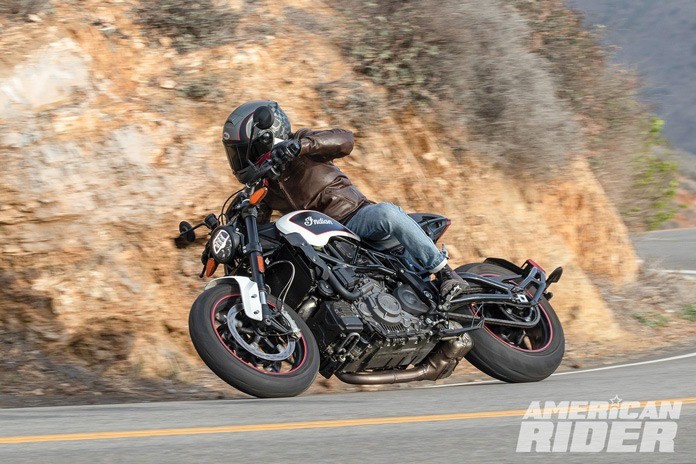
Best: The FTR’s brakes are brilliant, offering big power without being grabby. Like the Sportster, the Indian uses a Brembo master cylinder, braided steel lines, and an IMU for cornering ABS, but the FTR stands apart for its dual-disc setup. Calipers are 4-piston Brembos, but they’re not the latest one-piece clampers as used on the Harley.
Twist It Up!
The thing that makes motorcycles unique vehicles is that they lean into corners. So, after time riding in urban environments, we headed for the hills and canyon roads around Malibu.
If you’re the type of rider who relishes tilting horizons, they will be tilted quickest and steepest aboard the FTR. The pegs don’t touch down until leaned past 43 degrees, an angle beyond the capabilities of many riders.
The other huge factor in the FTR’s speed potential is 4.7 inches of rear-wheel travel, a figure that more than doubles what the other bikes have available. It’s the best suspension package by leaps and bounds, which happens to prevent leaps and bounds. Hitting a mid-corner bump while railing through a canyon isn’t nearly as frightful on the FTR as it is on its rivals. Suspension travel is just as beneficial at highway speeds and keeps a rider from cringing while encountering bumps of all kinds.
The FTR’s engine is always ready to romp, and it feels every bit as quick as the Sporty. Coarse vibes at higher revs make the engine feel more agricultural than the Harley’s smoother mill. The FTR’s inconsistent fueling is apparent with cruise control set while riding uneven pavement, as the bike fights itself to maintain a precise speed.
The Harley-Davidson Sportster S makes a surprisingly good canyon carver, bending into tight turns with unexpected grace and feeling planted when leaned over. It’s only at higher speeds when the fat (wider than the Scout’s rear!) front wheel/tire combo’s extra weight makes it more reluctant to steer.
The Rev Max impresses for its potency and panache, briskly heaving the Sporty out of corners from any point on its tachometer, and happy to rev out to its 9,300-rpm rev limiter. Footpegs scuffing the asphalt at 34-degree lean angles limit knee-dragging opportunities but are still quite, uh, sporty. Solid braking performance tames the velocities generated from the stonkin’ motor.
The Sportster S is equipped with a linkage-based shock that is fully adjustable, which is terrific. However, that fancy shock operates over just 2 inches of suspension travel. Hardtail riders might want to call me out for whining, but there’s no getting around all the bumps in the road. A thinly padded seat doesn’t help much.
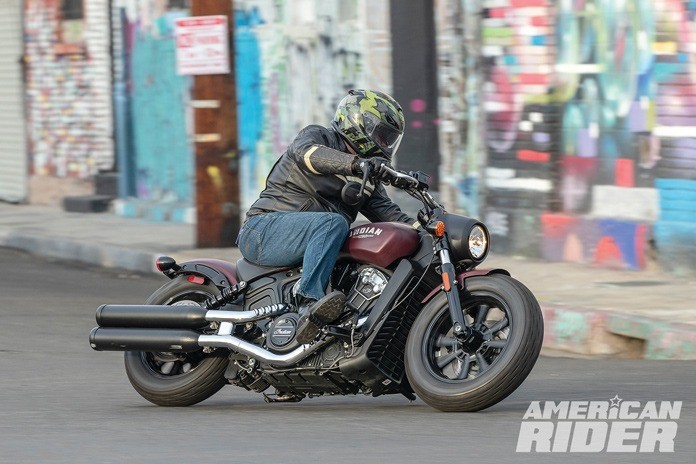
Two inches of suspension travel is a spec that also haunts the Scout Bobber, although its rear tire’s taller profile seems to deliver slightly better compliance than the Sporty, or perhaps it feels plusher because of its comfier seat. The regular Scout has 33% more rear-suspension travel (3.0 vs. 2.0 inches) and is equipped with passenger accommodations, but it’s priced $1,000 higher and doesn’t look as badass as the Bobber version.
Lean angles are quite modest, limited by footpeg clearance and its lower muffler, the latter especially vulnerable under heavier riders. The Bobber pleases when ridden within its limits. Throttle response is smooth, power is delivered tractably, the aggressive bar position feels cool, and braking performance is perfectly adequate.
King Of the Mills
A motor is so important to a bike that it’s literally in its name: motorcycle. And the MoCo team has created a great one in the Revolution Max. If you want to go fast on a new Harley, the Rev Max is your ticket for speed. And, potentially, tickets.
We strapped the bikes to the Dynojet of our friends at Jett Tuning to learn how they performed at all points of the rev ranges, measuring the actual power being put through to the rear wheel. The Sportster S spat out 116 ponies to the back tire, the biggest number (barely) of this test.
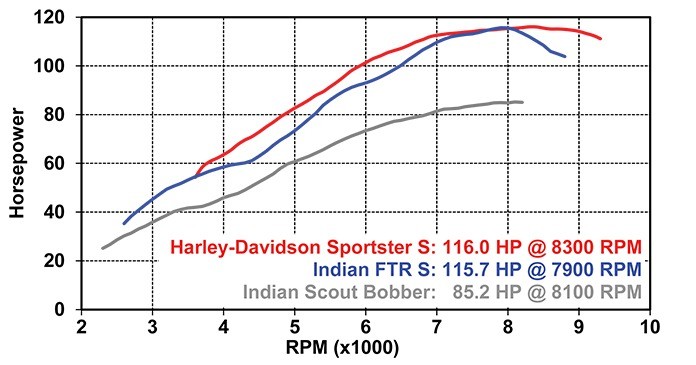
More importantly, the Harley’s extra cubes and variable valve timing give it an edge in power production from idle to redline. It twists out more torque than the FTR at all points on the dyno chart.
At the other end of the performance spectrum is the Scout. It’s out-gunned in the motor department largely because of its smaller displacement. At 1,133cc, it has 119cc fewer than the Harley. Top-end power is somewhat restricted by its intake system fighting for space with the fuel tank. Still, with 85 horses at the rear tire, it will easily outrun any stock Sportster Evo.

Indian’s FTR uses a hot-rodded version of the Scout’s motor, with a larger (1,203cc) displacement. Remarkably, the 73ci mill pushes out the same horsepower as the Sportster S, despite being 49cc smaller. The FTR suffers worse in torque production, peaking with 83 lb-ft of torque compared to the Harley’s 89.
Indeed, the Rev Max is the class of this field, at least in terms of performance and drivability. And it’s not just gruntier – it also feels the most refined and has the slickest gearbox of the group. It may not be as pretty as an Evo, but it’s superior in every other possible aspect.
Bringin’ It Home
Determining a winner in an oddball comparo like this depends entirely on a rider’s perspective.
If you want the best bang for your buck, the Scout Bobber fits the bill. It’s arguably more handsome than the Sportster, it’s fast enough for most riders, and it has more aftermarket support than the new Harley. And let’s factor in what the extra $4,000 in your pocket could buy.
The FTR is the outlier of this trio. Its style and riding position might not appeal to traditionalists, but it’s the most versatile motorcycle in this test and the only one we’d want to ride more than 300 miles in a day. If you’re a cruiser rider considering a sporty bike, the FTR is the perfect transition vehicle.
If you want the most significant motorcycle of the bunch, the new Sportster S is the bike for you. It looks brutish and formidable and is packed with high-tech features. Its best aspect is tucked between a rider’s knees. The Revolution Max is fabulous, proving itself first in the Pan America and now in the Sportster S.
We’re anxious to sample the Rev Max in a sportier machine with more than 4 inches of rear suspension travel. Fingers crossed…
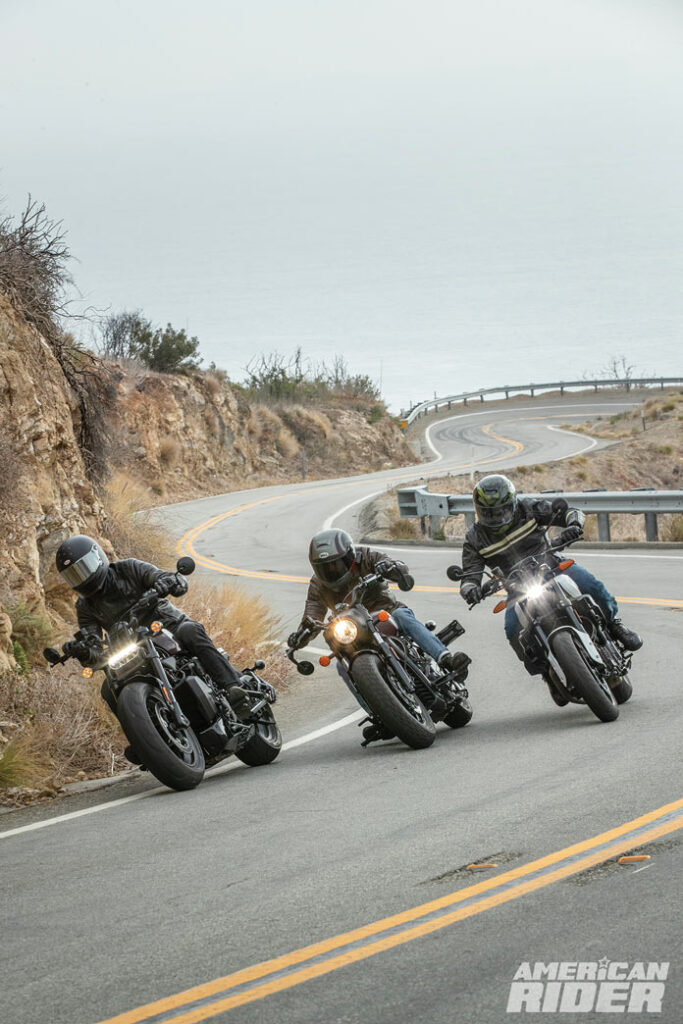
Harley-Davidson Sportster Forty-Eight
Base Price: $11,549 (w/ ABS)
Website: Harley-Davidson.com
Engine Type: Air-cooled, 45-degree Evolution V-Twin, OHV w/ 2 valves per cyl.
Displacement: 1,202cc (73.4 cu in.)
Bore x Stroke: 88.9 x 96.8mm
Compression Ratio: 10:01
Horsepower (factory claim): 68 hp @ 5,750 rpm
Torque (factory claim): 71 lb-ft @ 3,750 rpm
Horsepower (measured at rear tire): N/A
Torque (measured at rear tire): N/A
Transmission: 5-speed
Final Drive: Belt
Rake/Trail: 30.2 degrees/5.3 in.
Wheelbase: 58.9 in.
Suspension (F/R): 49mm fork/preload-adjustable twin shocks
Suspension Travel (F/R): 3.6/1.6 in.
Brakes (F/R): 300mm rotor w/ dual-piston caliper/260mm rotor w/ dual-piston caliper
Tires (F/R): 130/90-16 / 150/80-16
Lean Angle: 27 degrees
Seat Height: 28.0 in.
Fuel Capacity: 2.1 gal.
Fuel Economy (as tested): N/A
Fuel Range: N/A
Wet Weight: 556 lbs.
Warranty: 2 years, unlimited mileage
Harley-Davidson Sportster S
Base Price: $14,999 ($15,349 as tested in Crimson Red)
Website: Harley-Davidson.com
Engine Type: Liquid-cooled, 60-degree V-Twin, DOHC w/ 4 valves per cyl.
Displacement: 1,252cc (74.4 cu in.)
Bore x Stroke: 105.0 x 72.0mm
Compression Ratio: 12.0:1
Horsepower (factory claim): 121 hp @ 7,500 rpm
Torque (factory claim): 94 lb-ft @ 6,000 rpm
Horsepower (measured at rear tire): 116.0 hp @ 8,300 rpm
Torque (measured at rear tire): 89.0 lb-ft @ 6,000 rpm
Transmission: 6-speed
Final Drive: Belt
Rake/Trail: 30.0 degrees/5.8 in.
Wheelbase: 59.8 in.
Suspension (F/R): Fully adjustable 43mm inverted fork/fully adjustable single shock
Suspension Travel (F/R): 3.6/2.0 in.
Brakes (F/R): 320mm rotor w/ radial-mount 4-piston monoblock caliper/260mm rotor w/ floating 1-piston caliper
Tires (F/R): 160/70-17 / 180/70-16
Lean Angle: 34 degrees
Seat Height: 29.6 in.
Fuel Capacity: 3.1 gal.
Fuel Economy (as tested): 34.4 mpg
Fuel Range: 107 miles
Wet Weight: 503 lbs.
Warranty: 2 years, unlimited mileage
Indian Scout Bobber
Base Price: $10,999
Website: IndianMotorcycle.com
Engine Type: Liquid-cooled, 60-degree V-Twin, DOHC w/ 4 valves per cyl.
Displacement: 1,133cc (69 cu in.)
Bore x Stroke: 99.0 x 73.6mm
Compression Ratio: 10.7:1
Horsepower (factory claim): 100 hp @ N/A rpm
Torque (factory claim): 72 lb-ft @ 5,900 rpm
Horsepower (measured at rear tire): 85.2 hp @ 8,100 rpm
Torque (measured at rear tire): 64.5 lb-ft @ 5,700 rpm
Transmission: 6-speed
Final Drive: Belt
Rake/Trail: 29.0 degrees/4.7 in.
Wheelbase: 62.0 in.
Suspension (F/R): 41mm fork/preload-adjustable dual shocks
Suspension Travel (F/R): 4.7/2.0 in.
Brakes (F/R): 298mm rotor w/ 2-piston caliper/298mm rotor w/ 1-piston caliper F/R
Tires (F/R): 130/90-16 / 150/80-16
Lean Angle: 29 degrees
Seat Height: 25.6 in.
Fuel Capacity: 3.3 gal.
Fuel Economy (as tested): 35.4 mpg
Fuel Range: 117 miles
Wet Weight: 553 lbs.
Warranty: 2 years, unlimited mileage
Indian FTR S
Base Price: $14,999
Website: IndianMotorcycle.com
Engine Type: Liquid-cooled, 60-degree V-Twin, DOHC w/ 4 valves per cyl.
Displacement: 1,203cc (73.4 cu in.)
Bore x Stroke: 102.0 x 73.6mm
Compression Ratio: 12.5:1
Horsepower (factory claim): 120 hp @ 7,750 rpm
Torque (factory claim): 87 lb-ft @ 6,000 rpm
Horsepower (measured at rear tire): 115.7 hp @ 7,900 rpm
Torque (measured at rear tire): 82.7 lb-ft @ 5,700 rpm
Transmission: 6-speed
Final Drive: Chain
Rake/Trail: 25.3 degrees/3.9 in.
Wheelbase: 60.0 in.
Suspension (F/R): Fully adjustable 43mm inverted cartridge fork/fully adjustable single shock Suspension Travel (F/R): 4.7/4.7 in.
Brakes (F/R): Dual 320mm rotors w/ 4-piston calipers/260mm rotor w/ 2-piston caliper
Tires (F/R): 120/70-17 / 180/55-17
Lean Angle: 43 degrees
Seat Height: 32.2 in.
Fuel Capacity: 3.4 gal.
Fuel Economy (as tested): 34.0 mpg
Fuel Range: 116 miles
Wet Weight: 508 lbs.
Warranty: 2 years, unlimited mileage


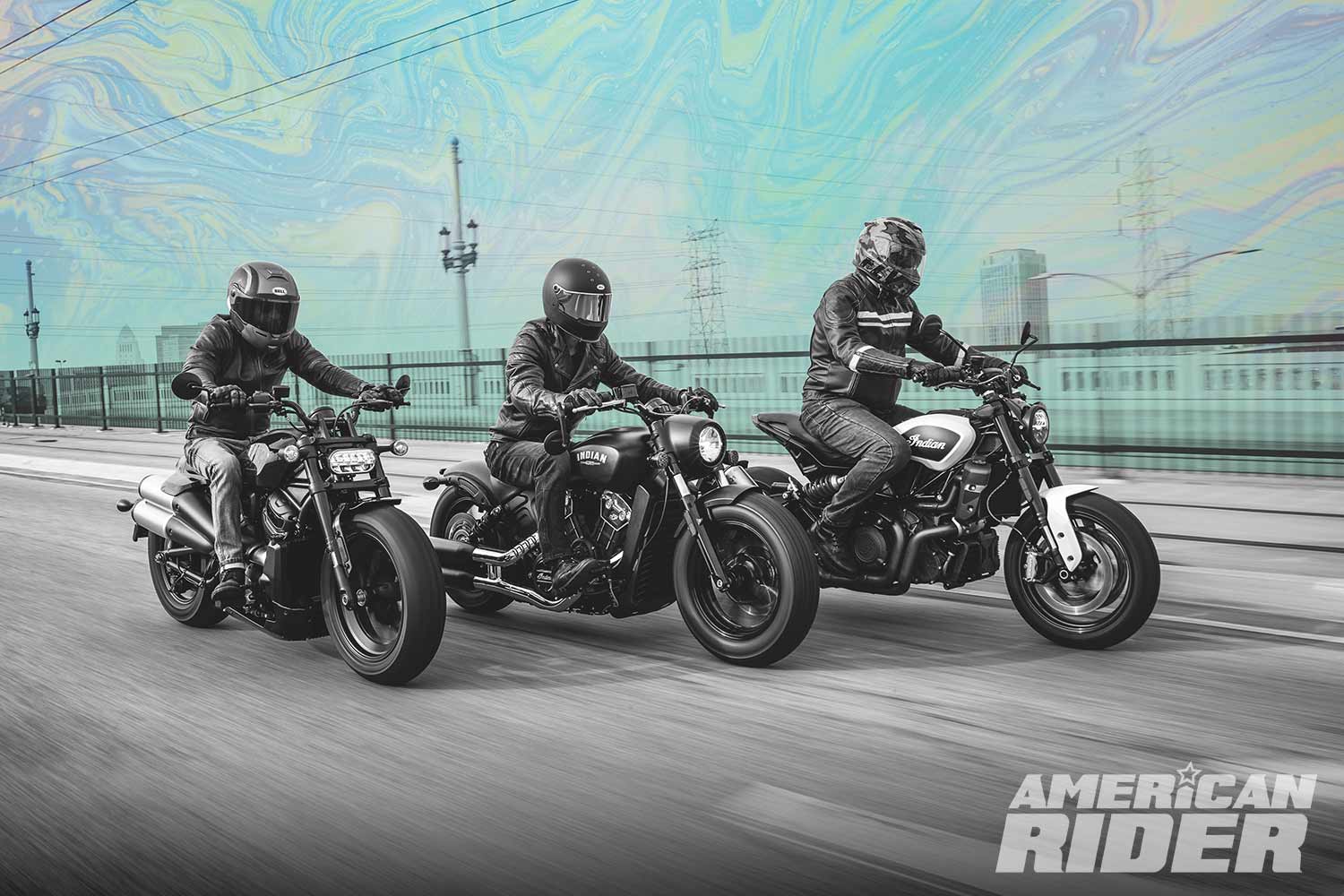

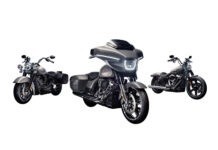

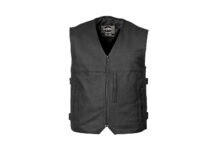

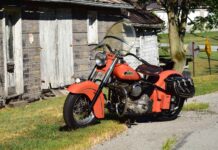










I ride a Victory Octane, only year offered 2017 and it is a runner. I changed the too quiet standard pipes to the factory offered slightly louder and deeper pipes and now it sounds like a real motorcycle. Been very happy with it. Only complaint is stopped at a light have to keep my right knee well out to the right to keep the front pipe from burning a hole in my pants, which has happened twice. This bike is factory rated at five more than the very similar Indian Scout, at 105 HP. I’ve received nothing but compliments on the looks of this bike even in its flat grey paint. Love that because don’t have to be waxing it all the time, save the gloss black rims. I can highly recommend the Scout Bobber if you want to do extensive riding based on it being about the same as my Octane. But, even with a seat on the rear fender, which I don’t have, the bike quite frankly is too small for any extensive two up riding. Thanks for listening.
Styling (which is subjective) aside, the Octane is actually a better motorcycle than the Scout. It’s a shame that it had such a short run!
You really should have included the new Harley Nightster 975 which is a much better comparison to the base Indian Scout and the Scout 60. I have both the Nightster and the Scout and the comparison is much closer than using the new Sportster S which doesn’t match the Indian lineup very well
Agree, but we did this comparison test before the Nightster debuted. Between your Scout and Nightster, which do you prefer?
The exaust does not have to feel it has to dominate the image of the MC in an effort to prove something……..MCs do not have to be NOISY to be Kool!